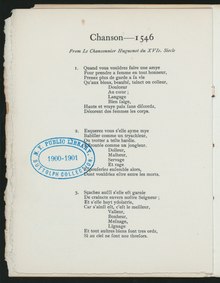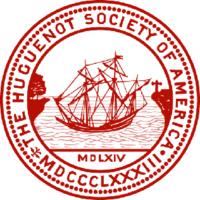
The Huguenot Society of America is a hereditary patriotic society, organized in New York City on April 12, 1883, and incorporated on June 12, 1885.
About

The Huguenot Society of America is a New York City–based genealogical organization. On April 12, 1883, the Society was inaugurated by a group of descendants of Huguenots who had fled persecution in France and who (or whose descendants) settled in what is now the United States of America. The purpose of the Society is primarily to promote the cause of religious freedom and to perpetuate the memory of the Huguenot settlers. Its first president was John Jay—lawyer, diplomat, abolitionist, and grandson of the first Chief Justice of the United States.
Today, the Huguenot Society of America has members in forty-three of the fifty States, the District of Columbia, Great Britain, Italy, and the Netherlands. The Society maintains an extensive library of books relating to Huguenot history; preserves pictures, sculptures, and artifacts relating to the Huguenots; presents lectures on topics of Huguenot interest; supports important research in Huguenot history; and gives annual scholarships to American Huguenot descendants attending selected colleges and universities. [1]
The Huguenot Society of America is sometimes confused with the similarly named but unaffiliated National Huguenot Society, which was founded in 1956.
Notable members
- Alphonso T. Clearwater
- John Jay (lawyer)
- Martha J. Lamb
- Henry Gurdon Marquand
- Frederic James de Peyster
- Jacqueline Noel [2]
References
- ^ Reeser, Philip A. (ed.). The Huguenot Society of America: History, Organization, Activities, Membership, Constitution, Huguenot Ancestors, and other Matters of Interest. New York: The Huguenot Society of America, 2005
-
^ Binheim, Max; Elvin, Charles A (1928).
Women of the West; a series of biographical sketches of living eminent women in the eleven western states of the United States of America. Retrieved 8 August 2017.
 This article incorporates text from this source, which is in the
public domain.
This article incorporates text from this source, which is in the
public domain.
External links